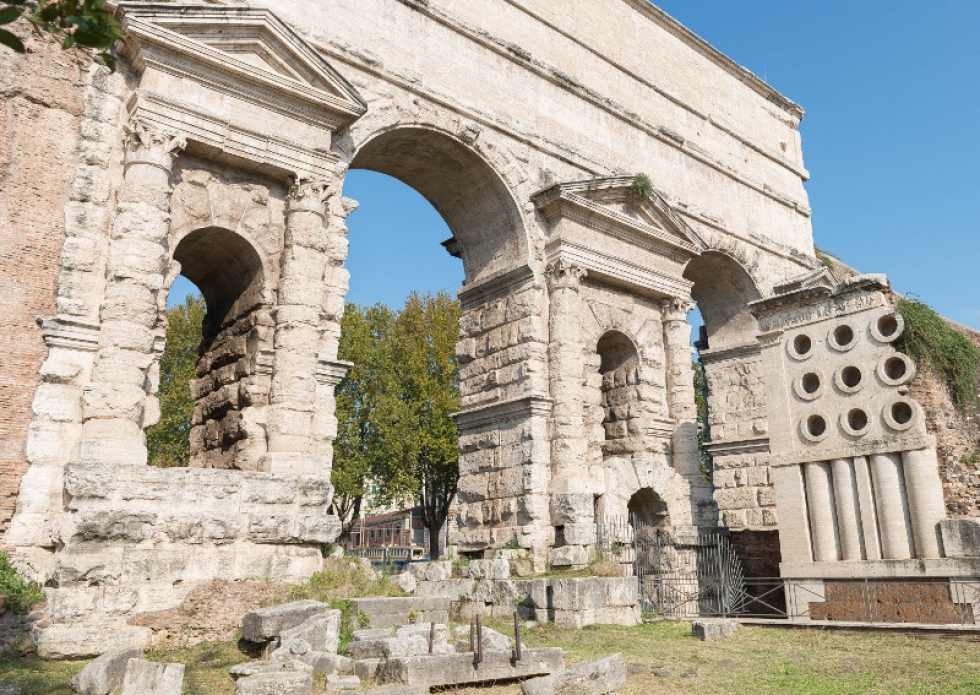Near Porta Maggiore, “Larger Gate”, one of the most beautiful gateways of the ancient Aurelian Wall, stands in all its majesty a funerary monument that too many times doesn’t receive the attention it deserves from the people that pass by. Discovered in 1838, when Pope Gregory XVI demolished the defensive towers built during the late Empire (beginning of 5th century) on Porta Maggiore, this weird structure is particularly interesting, almost unique, for being a real document that immortalizes all the steps of bread making from 2 millennia ago!
Why so? Simply because this is the tomb of Eurysaces, a rich baker that worked also for the state for which he provided his products. Eurysaces was a redemptoris (Latin), which means he was one of the official suppliers of the Roman administration, as we can deduct from the inscription on the sepulcher. Eurysaces that became very rich through his job although he was a libertus, which means “freed slave”, built this tomb for himself and for his wife, Atistia, in 30 BC circa. He loved his job so much that he made it eternal through his sepulcher; everyone was meant to see who Eurysaces had been and what were the major characteristics of the job that gave him so much fame and prosperity. Indeed, he must have been a pretty famous personality for his baker skills. Moving to the structural analysis, this mausoleum presents the shape of a small brick building, 7 meters tall and entirely covered in Travertine sheets. It presents, on the 3 almost completely surviving sides, the circular openings of the ovens and the containers for the kneaded flour; as if it were a big bakery. On the fourth side, unfortunately lost, there were the carved the portraits of the two spouses (we can observe them nowadays at the Capitoline Museums). All around the structure, in the frieze on the upper part, there is a series of beautiful low-reliefs describing all the steps of bread making. How wheat was weighted, how it was transformed into flour, how the dough was made, and, most importantly, how bread was baked; all of these are the most relevant steps described by Eurysaces on the frieze of his sepulcher. Well, one of the most interesting observations that we can make analyzing these sculptures is that, throughout the centuries, or better, millennia, the procedure of bread making hasn’t changed so much. Or rather, in its most important steps there hasn’t been any change. Very impressive! To understand, then, the strength of the love the baker felt for his wife, but also for his we have to remember that the urn containing the ashes of the wife (the only one survived, now conserved at the museum of the Baths of Diocletian) was in the shape of a kitchen chest full of bread. The kitchen chest was in wood with high edges, and it was used to mix the dough and store yeast and flour. It has been largely used in the Western world until the beginning of the 20th century. The funerary urns were stored at the base of the structure, in a small burial chamber that reminded the inside if a wood-fired oven. Finally, at the top of the structure, there was a small construction, destroyed in the ages, with a pyramidal shape. Almost like a modern hood. Basically, more than a tomb, we have a 2000 years old oven!!
Giuseppe Rosselli




